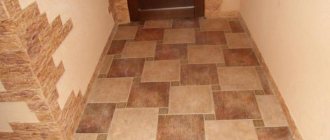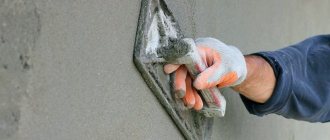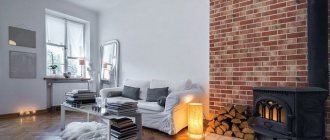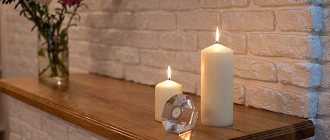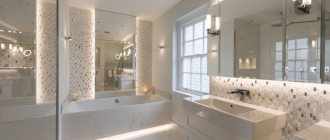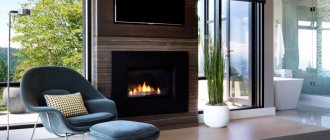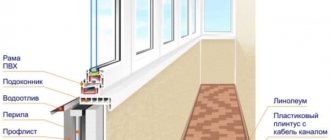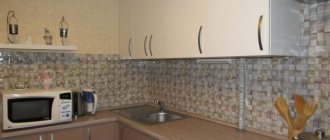Clinker is dried, crushed and subsequently fired clay. Thanks to the shape, clinker bricks are made for paving roads or tiles for finishing facades. The building material is durable during use, but fragile during the finishing process. For installation, a special adhesive composition is used. Clinker tiles for the facade are a relevant option when it is necessary to hide construction defects, update the appearance or make the building attractive.
What to look for when choosing clinker?
Attention should be paid to the following nuances:
- When choosing these products, it is first of all important to correctly calculate the required amount of material. It is advisable to purchase clinker with a reserve, in case of trimming or for replacement if damaged.
- This finish is very fragile, so it is also important to check the integrity of all elements when purchasing.
- For clinker tile cladding, you should select high-quality grout that can compensate for the thermal expansion of the product.
- The color of the grout joints can either harmonize or contrast with the cladding, emphasizing all its beauty.
Don't make a mistake with your choice
To find your panels, you should know simple rules:
- Buy only from licensed companies.
- Check certificates.
- Read installation instructions.
- Study general characteristics.
- Obtain guarantees in case of breakdowns or defects.
- Read the opinions of other people who have already used this type of façade finishing on the forums.
- Take into account the climatic conditions of your region.
- Consult with specialists.
You can study general recommendations for installing facade panels with your own hands in more detail in our separate article.
If everything is done correctly, then facade thermal panels with clinker tiles will last for many years without breakage or deformation, which will help maintain home comfort, a comfortable stay in your own walls, and also save money on finishing materials and on paying for electricity to increase heat in the house.
And everyone who comes to visit will not be able to distinguish that on the walls of your house there is only an imitation of high-quality expensive wood or natural stone. Save wisely - buy facade thermal panels with clinker tiles - an excellent substitute for expensive natural materials.
Pros and cons of clinker
Table of advantages and disadvantages of clinker finishing.
| pros | Minuses |
| Very strong, durable in use, resistant to wear, damage and various natural factors. | High price category. |
| Completely environmentally friendly, natural, does not contain harmful toxic substances. | Small variable selection. Basically, this material is similar to brick or stone. |
| It is fireproof and has high frost resistance. | Quite fragile. |
| Does not react to chemical irritants, even the most aggressive ones. | During installation, it may require joining and trimming. |
General information about panels
All panels can be classified according to different criteria:
- Based on materials of manufacture: metal, composite, plastic, impregnated wood, polymers.
- By format - long slats, rectangles, narrow slats, square.
- In appearance - maximally simulating stone, wood, brick, plaster, painted slabs, etc.
- In terms of thermal insulation - with insulation: thermal panels, sandwiches with built-in insulation, without insulation.
More often, when finishing the exterior of a house, the choice falls on panels with insulation, because such finishing immediately carries multifunctional tasks:
- home insulation;
- stylish decor;
- saving energy for heating the house.
Application options for exterior decoration of houses
Popular cladding options in the exterior.
Finishing the facade of the house with clinker tiles
These products are very often used in the external design of buildings. Clinker can not only add aesthetics to the facade of a private house, but also provide excellent protection against negative influences.
The tile material is laid on a previously prepared and leveled plane and quite realistically imitates brickwork.
The photo shows a private house with a facade covered with sand-colored clinker tiles.
Such facade cladding is easy to maintain, does not accumulate dust and is not susceptible to the spread of moss, which allows you to maintain the clean and neat appearance of a country cottage for a long time.
For the external design of walls and foundations, as a rule, more durable models with greater thickness are chosen.
The photo shows clinker street tiles used to decorate the façade of a country cottage.
Photo of the porch cladding
The street porch and stair steps are especially susceptible to frequent mechanical stress, temperature changes and various weather conditions. In this case, clinker tiles are the most suitable external cladding option that can withstand such impacts.
The photo shows a street porch with an external clinker cladding of a rectangular shape.
Rough clinker has a fairly high coefficient of adhesion to the surface, due to which it ensures stability and safe movement even in the event of slight ice formation. This can also be facilitated by special raised tubercles or notches located on the product.
The photo shows brick-colored clinker in the design of stair steps.
Examples of clinker tiles on a balcony
This finishing allows you to bring home comfort, warmth into the balcony space and create an amazing, comfortable atmosphere in it.
The photo shows a loggia with walls lined with dark brick-like clinker tiles.
In the design of a balcony or loggia, both floor and wall clinker tiles are used. For example, very often you can find brick-like products here, which always look natural and natural.
The photo shows a light-colored clinker tile finish on the balcony.
Outdoor flooring ideas
Paving clinker is an excellent solution for paving paths in the yard and landscaping the surrounding outdoor space, for example, verandas, terraces or areas around swimming pools.
Paths decorated with soft-colored material or fired tiles in brown, gray and graphite shades, with different layouts, will become a versatile and elegant addition to any landscape.
Window and door finishing
Straight or corner tile elements are perfect for framing the space around doors, thresholds or slopes; similar design is also used for finishing window openings or window sills. Thus, it turns out to give the surrounding design an individual style.
The photo shows a window sill made of black clinker tiles.
Fence
This finishing solution is often used to decorate pillars, plinths or the entire plane of the fence. Clinker combines well with other materials, for example, brick, wild stone, forged metal, corrugated sheets and others.
Customer Reviews
For interior spaces this is a great option because it saves space. The masonry turns out almost like a real one, and the free area is not reduced. For facades this does not matter, but the difference in the cost of decorative bricks and tiles is also huge.
Kirill
It is not normal to stick tiles onto aerated concrete without thorough surface preparation.
Alexei
Clinker tiles are attractive because they do not require particularly complex preparation of the surface for cladding.
I recommend! Michael
What does clinker look like in the interior of an apartment?
Clinker also makes an excellent interior finish for various interior elements. For example, tile products are used to decorate arches and doorways in fragments, creating an imitation of brickwork; they decorate windows, columns, or create accent corners on walls, thereby creating a current and fashionable design.
The photo shows the living room interior and fireplace with gray clinker tile cladding.
For interior finishing work, thinner tile models are chosen, which are particularly aesthetically pleasing and do not overload the space. In the interior of the kitchen, clinker is quite often found in the design of an apron, countertop or stove.
A work area decorated in this way will not only easily withstand temperature changes and humidity, but also create a stylish and modern interior. A stove lined with heat-resistant tiles cools down much longer and retains heat.
The photo shows light brick-like clinker in the design of a kitchen work area.
In the living room, you can use clinker to decorate both a decorative and a real fireplace. This design technique looks very original and gives the hall an individual image. Clinker tiles are also found in the lining of a bathroom, hallway or corridor, which is a very practical solution that makes it easy to clean a surface that is often subject to contamination.
The photo shows a kitchen with a stove decorated with square clinker tiles.
Production technology
Clinker production is quite developed in all countries. Many people use old “recipes” for making them. Each manufacturer adheres to certain manufacturing technologies, but the base remains the same:
- At the initial stage, the base raw material crumbles into small particles, which are then compressed.
- Basic raw materials are obtained by combining simple and shale clays. Sometimes broken earthenware or fireclay is used. Flux and coloring oxide are used less frequently.
- Dyes are additionally added to the batch. Additionally, various crumbs, glitter, and other decorative elements are added.
- The prepared mass is pressed through a special mold using a special machine.
- Conventional presses make flat tiles, but extrusion makes it possible to make different shapes, patterns and sizes from clinker raw materials.
- After preparing the mold, cutting is done. Thus, the thickness of each tile is formed.
- The prepared elements are placed in tunnel kilns, where firing is carried out at 1300 degrees Celsius. The procedure is carried out within a week.
- After firing, secondary finishing is carried out - grinding, cutting off edges, secondary painting.
Many builders believe that German products are the best option. The most popular brand is Stroeher. Domestic manufacturers make material of the same high quality. The most popular clinker tiles produced in Russia:
- Keralite. Producing a variety of material options for over 100 years. Average price per m² 1105 rub.
- Eco Clinker. The company has become the best alternative to imported suppliers, since the cost for clinker materials from a domestic supplier is 1,130 rubles. per m².
Other companies are smaller manufacturers compared to the brands presented. The quality of the product can be indicated by the price, which for well-known manufacturers is usually more than 1 thousand.
Colors of clinker tiles
The most popular models are brown, black, gray, white, beige, red and yellow.
The photo shows a landscape of a country house with yellow clinker street tiles.
The material in white, red or burgundy looks very bright, captivating and attracts attention. In addition, elegant white products can be either snow-white or have a yellowish tint or be ivory in color.
In the photo there is black brick-like clinker on the wall in the living room interior.
Yellow clinker can add special coziness, warmth and comfort to the surrounding environment. Black models have a rather discreet and stylish look, especially in combination with a plain grout.
A little more expensive, but more reliable
There is a huge variety of facade thermal panels with clinker tiles, depending on the method of fastening and their reliability. They can be either two-layer, or a third additional layer can be added in the form of a metal or foil gasket. If you have the opportunity to pay a slightly higher price, then you can purchase panels with a third rigid layer, with tongues and grooves, with built-in fastening metal plates, with a sleeve for plastic fasteners, etc.
Tongue and groove panels
All these devices slightly increase the cost of the slabs, but they guarantee durability of use, and are also more easily and simply installed on the facade of any building.
Production of thermal panels
Therefore, even an amateur can do the installation of thermal plates using simple instructions for use. This does not require special education or skills. But still, experts recommend getting advice from builders with experience - after all, there are many nuances that can ultimately affect the purchase of a panel of one or another fixation rigidity.
Clinker tile design
An original solution is partial finishing, for example, fragmentary decoration of a corner or the bottom of a wall. This decor looks much more unusual than a fully tiled surface and adds lightness and a certain mystery to the atmosphere. Thanks to the combination of tiles and plaster, you can achieve an amazing and stylish design and create an atmosphere reminiscent of a medieval castle.
The photo shows a clinker tile finish imitating an old brick on the wall in the hallway interior.
Antique products or models with specially emphasized uneven firing, with alternating light and dark areas, look very interesting, stylish and natural.
The photo shows the lower part of the wall, decorated with light-colored clinker tiles.
Also no less impressive is the cladding, in the form of matte or glossy glazed clinker tiles, characterized by an even shiny finish. Finishing with aged brick or torn stone will create an imitation of rough industrial walls and will be especially appropriate in a loft-style room. Products imitated with wood completely convey the natural texture and are not at all different in appearance from their real counterpart.
Grouting joints
In order to grout the seams between the tiles, you should prepare materials and tools in advance
Has its own characteristics. After the glue has slightly hardened, use a special thin spatula to remove it from the seams and clean the surfaces of any glue residue. Start grouting no earlier than three days after installation, otherwise the tiles may become damaged and will have to be re-glued. Prepare the grouting solution taking into account the manufacturer’s recommendations; we described above which brand to choose. It should be semi-dry in consistency.
Place a little mortar on a trowel or any flat surface; to seal, you need to have a long, narrow tool the width of the seams.
Trowel or trowel for jointing or grouting clinker tiles
Lean the trowel against the wall, pick up small portions of the thick mortar with the tool and carefully seal the seams. Level their surfaces at the same time.
Practical advice. It is much faster to first seal several rows of vertical seams, and then horizontal ones. At the same time, remove the difference in height between them.
Colored grouting mixture (fugue) for clinker tiles
Prices for construction grout Ceresit Super
Construction grout Ceresit Super
Joining with a trowel
Vertical seams are easier to open with a smaller spatula
The picture shows the grouting
When opening seams with a trowel, you can create various optical elements
This method of semi-dry grouting significantly reduces contamination of the front surface of clinker tiles. Final cleaning is done with an ordinary brush.
Brushing the seam with a brush gives it the appropriate structure
Type of finished seam
It is not recommended to use seams that are not completely filled, as moisture and dirt collect in them.
If you have sufficient skills, then you won’t have to use a damp sponge; the work will be done neatly and beautifully. If not, then the problem areas will have to be wiped. But remember that the surface of clinker tiles is easy to dirty, but difficult to clean. After drying, the stains will appear again, the procedure will have to be repeated several times.
According to the surface grouting method, the seams are sealed using a jointing or plaster lath
After drying, the remaining grout is removed from the tile with a sponge using movements at 45 degrees to the tile
Using a plaster lath with a sponge, wash off the excess solution diagonally
Finished look
